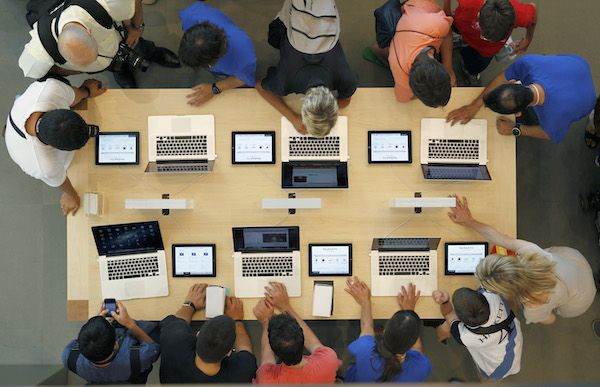MacBook Tip: How To Access Mac Menus, Apps Using The Keyboard

KEY POINTS
- Apple has designed the MacBook to be an effective productivity tool
- MacBook users have a treasure trove of shortcuts that can help them work faster, better
- Some of these don't even require the use of a mouse or trackpad
MacBook users have a treasure trove of shortcuts they can use so they can work better and faster. Some of these shortcuts don't even require the use of a mouse or trackpad; all it needs is the keyboard.
Users who want to learn how to work on their MacBook faster need to know how to use the help menu using the keyboard. It's easy and allows users to do things faster and without the help of a mouse. Here's how to do it, as per Cult of Mac.
First, a primer
The help menu is a very helpful tool all MacBook users need to master. Launching it gives users access to a search box that can be used to locate various tips included in the MacBook's help files. It also allows users to search for various menu items and commands, such as exporting files, printing documents and so on.
While the help menu can be maximized with the help of a mouse, it can very well be used with nothing but a keyboard.
Now, how to use it
Users don't need to know a lot of things to use the help menu. Users can launch the help menu by pressing the “Command” key plus the “?” key. The menu should open after pressing these buttons.
Once the menu opens, users can simply press up or down to navigate through the list of menu items. Those who know what they want to open or do can type the name of the app or task to access it. Highlighting the menu item and pressing Return will execute that menu command or launch that app.
More shortcuts
Typing certain letters on the search box brings up options that start with that letter. For example, typing “p” will change the menu items to tasks or commands that start with that letter: “Preferences,” “Preview,” “Print,” “Paste” and the like will appear as menu items that users can select from.
This can also be done inside certain apps. Those who tend to use a particular app are likely to know a specific command they often use. Those who forget where the command is located can simply press “Command+?” and type the name of the command to find a selection of commands with the same name. Navigating to the desired command and hitting Return executes it.
© Copyright IBTimes 2025. All rights reserved.





















